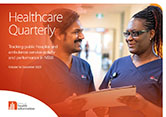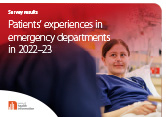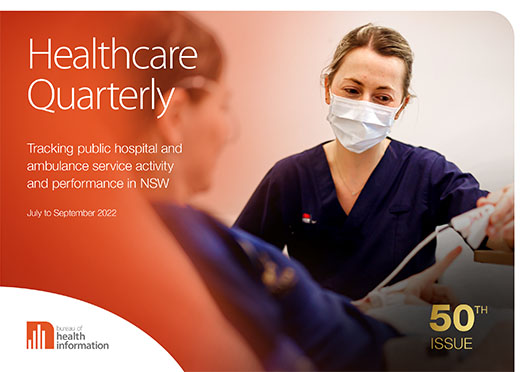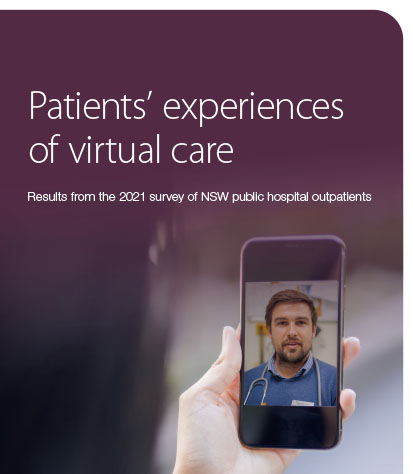The Bureau of Health Information (BHI) has today released its latest Healthcare Quarterly report, showing activity and performance for public health services in NSW during July to September 2022.
Also released today, the results of BHI’s Virtual Care Survey 2021 reveal the experiences of NSW public hospital outpatients.
BHI Chief Executive Dr Diane Watson said Healthcare Quarterly results show NSW hospital and ambulance services continued to experience high demand in July to September.
“While patients continued to wait longer to receive treatment than before the pandemic, there were some signs of improvement compared with the April to June 2022 quarter,” said Dr Watson.
There were 330,591 ambulance responses, up 3.3% (10,414) from July to September 2019.
Dr Watson said: “The number of priority 1 (P1) responses for emergency patients was 170,567 up 16.3% when compared with the same quarter in 2019.”
The percentage of P1 cases with a call to ambulance arrival time within 15 minutes was 38.0%, well down on pre-pandemic levels but up from the preceding quarter.
There were 744,853 emergency department (ED) attendances, down 2.6% (19,630) compared with July to September 2019 and down 6.3% (50,149) compared with the preceding quarter.
However, presentations for the most serious triage categories 1 and 2 were 6,022 and 110,572, up 10.7% and 11.0%, respectively, compared with the same quarter in 2019.
Three-quarters of patients (74.8%) who arrived by ambulance had their care transferred to ED staff within 30 minutes and one in 10 waited longer than 1 hour 8 minutes to be transferred.
Dr Watson said: “Although there was some reduction in time to start treatment, patients continued to face long waits in the ED, particularly for those admitted to hospital.”
There were 55,493 elective surgeries performed in the July to September quarter.
Fewer elective surgeries were performed compared with the same period in 2019, however there was a 3.3% increase compared with the preceding quarter as activity continued to recover following previous suspensions of services.
There were 99,985 patients on the waiting list at the end of September, while 17,893 of those had waited longer than clinically recommended – down from a record high in the preceding quarter. Most of these patients were waiting for semi-urgent (29.7%) and non-urgent (70.1%) surgeries.
Dr Watson said: “Non-urgent and semi-urgent patients continued to experience longer elective surgery waiting times than before the pandemic and the results will continue to show this while hospitals work to clear the backlog of patients who waited longer during the pandemic.”
Virtual Care Survey
The results of the Virtual Care Survey 2021 reflect the experiences of 2,816 people who had at least one virtual care appointment with a NSW public hospital outpatient clinic in 2021.
“Most patients gave positive ratings of their virtual care throughout 2021 which was provided during a period when NSW experienced the Delta and Omicron COVID-19 waves,” said Dr Watson.
The results show:
- Around nine in 10 patients in NSW (91%) rated their virtual care throughout 2021 as very good or good (unchanged from 2020).
- The more virtual care appointments a patient had, the more positive they were likely to be about their overall experiences.
- Benefits most frequently cited by patients were convenience, saving time and feeling at ease in their own surroundings.
- However, almost one-third of patients (31%) said their virtual care experiences were not as good as in-person appointments, with these patients more likely to have long-term health conditions, live in urban areas and have had fewer virtual care appointments. During 2021, survey respondents may not have had the option to choose between in-person and virtual appointments due to COVID-19 restrictions.
The report also includes insights into the experiences of those public hospital outpatients who also had a virtual care appointment with a GP.





